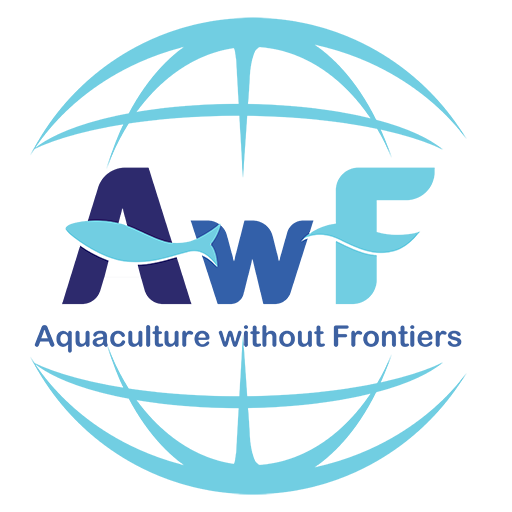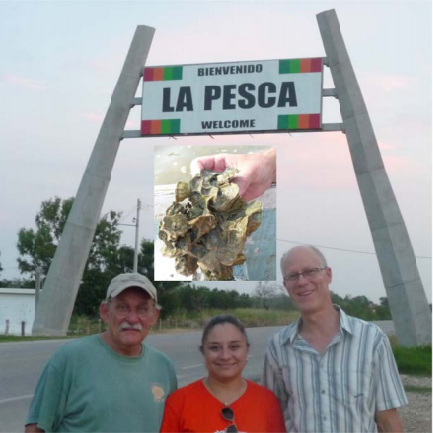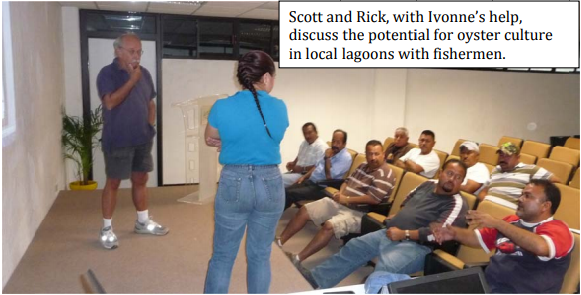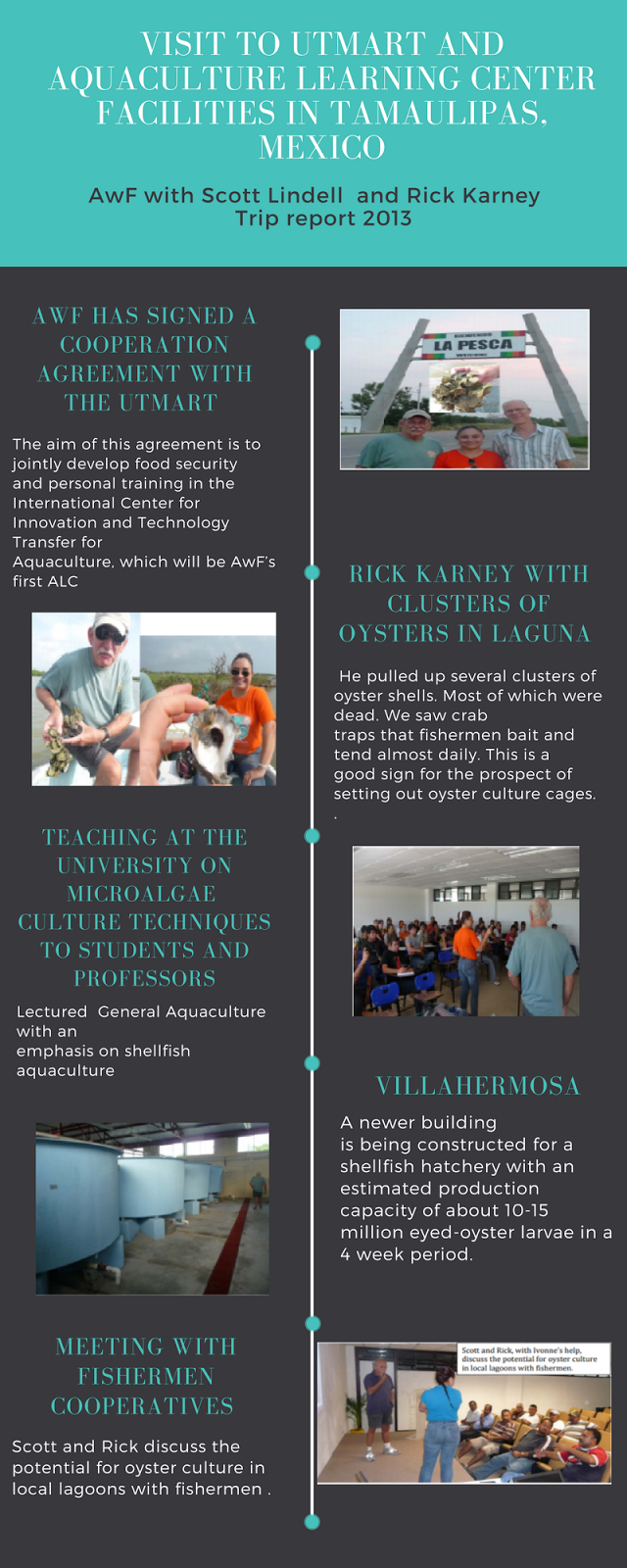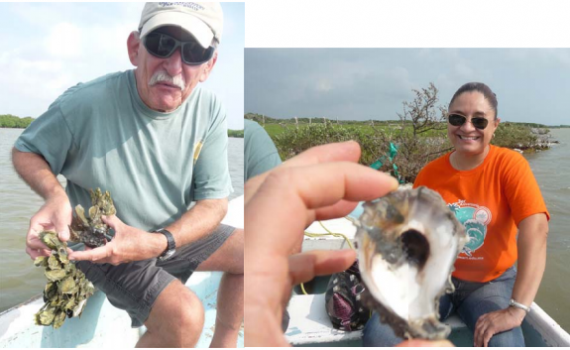
Visit to UTMarT and Aquaculture Learning Center Facilities in Tamaulipas, Mexico
Category:Digital Stories,MexicoVisit to UTMarT and Aquaculture Learning Center Facilities in Tamaulipas, Mexico
AwF has signed a Cooperation Agreement with the Universidad Tecnológica Del Mar de Tamaulipas Bicentenario (UTMarT). The aim of this agreement is to jointly develop food security and personal training in the International Center for Innovation and Technology Transfer for Aquaculture, which will be AwF’s first Aquaculture Learning Centre (ALC).
Day 1 – Tancol
We visited the ALC near Tampico. The site consists of several large concrete ponds, a meandering system of raceways and a series of smaller concrete ponds. We also saw the construction of a hatchery that is planned for catfish and other freshwater fish. Classrooms, labs and dorms are being constructed and renovated.
During our drive, we learned the following about oyster producers and markets:
- They harvest oysters to fill orders e g. 100 shucked meat for 80 pesos (less than a penny a piece).
- Harvested oysters are taken home and shucked before being sold to buyers who transport them to the city markets and restaurants.
- There is no current exploration of half-shell markets that could significantly increase the price per oyster.
- Selling chilled oysters in the shell would present new refrigeration and handling challenges.
One low cost alternative to explore is developing a hatchery with spat-on-shell capabilities. From this extra stock, fishermen could begin to explore culling the prettiest oysters and try to develop a market for oysters on the half shell.
Day 2 – La Pesca, UTMarT and Laguna Morales
Margorito, fisherman and president of the local fishing cooperative took us by boat to Laguna Morales. He pulled up several clusters of oyster shells. Most of which were dead. We saw crab traps that fishermen bait and set with colour-coded floats that they tend almost daily. This is a good sign for the prospect of setting out oyster culture cages. Later that morning, we lectured over 45 university students in General Aquaculture with an emphasis on shellfish aquaculture.
Day 3 – UTMarT and Villahermosa
We returned to the university to examine the oysters and the water sample that we collected from the Languna on the previous day. Then, we taught a class at the university on microalgae culture techniques to a couple of students and professors.Afterwards, we visited Villahermosa, a formerly state-run aquaculture facility recently turned over to the university. Here, there is a pumping station from the river that supplies extensive outdoor ponds A newer building is being designed and constructed for a shellfish hatchery with an estimated production capacity of about 10-15 million eyed-oyster larvae in a 4 week period.
Day 4 – Meeting with Fishermen Cooperatives
We convened a meeting with 9 fishermen and they were all eager to expand their oyster harvests by means of better management, more open areas and possibly culturing them. We described various methods of collecting natural spat and ways of enhancing natural production. They expressed interest in aquaculture and appeared ready to try to plant seed oysters in bags as we had described.
Conclusions
The educational, research and productive potential of fresh and saltwater aquaculture facilities at Tancol and Villahermosa are tremendous. The UTMarT staff who accompanied us and others we met are inspirational teachers and evidently have the expertise to launch the Villahermosa facility. The fishermen/producers we met are motivated to improve their fishing opportunities and trying basic oyster culture methods.
F2F AwF Volunteer Assignments #15 & 16
Scott Lindell and Rick Karney
Read More here:
MEXICO: AwF-UA Farmer-to-Farmer Programme (Trip Report November 2013)
